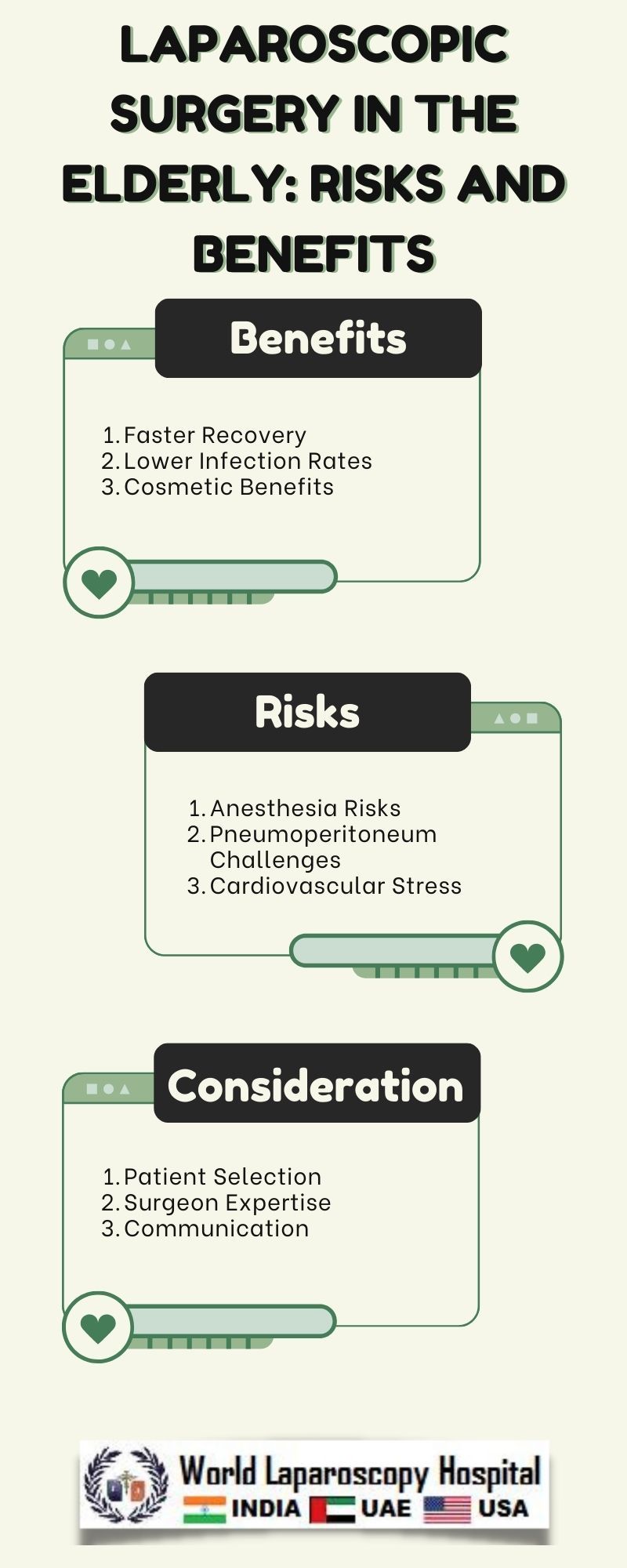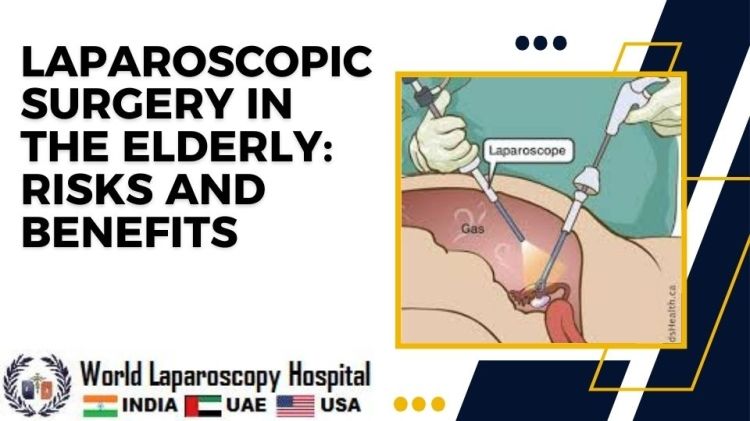Laparoscopic Surgery in the Elderly: Risks and Benefits
Introduction:
Laparoscopic surgery, a minimally invasive approach, has revolutionized the field of surgery, offering numerous advantages over traditional open procedures. While its benefits are widely recognized, the application of laparoscopic techniques in the elderly population requires a nuanced understanding of the unique challenges and opportunities posed by age-related factors. This article delves into the intricate landscape of laparoscopic surgery in the elderly, dissecting the risks and benefits to provide a comprehensive guide for healthcare practitioners.

Overview of Laparoscopic Surgery:
Definition and Evolution:
- Brief explanation of laparoscopic surgery and its historical evolution.
- Highlighting key technological advancements contributing to its widespread adoption.
Advantages of Laparoscopic Surgery:
- Reduced postoperative pain.
- Faster recovery times.
- Smaller incisions, leading to decreased risk of infection.
- Improved cosmetic outcomes.
General Applicability:
- Overview of the diverse surgical procedures amenable to laparoscopic techniques.
Age-Related Considerations:
Physiological Changes in the Elderly:
- Discussing age-related alterations in anatomy, organ function, and tissue elasticity.
- The impact of comorbidities on surgical planning and execution.
Cognitive Function and Informed Consent:
- Addressing potential challenges in obtaining informed consent from elderly patients.
- Strategies for effective communication with geriatric populations.
Risks Associated with Laparoscopic Surgery in the Elderly:
Anesthesia Considerations:
- Assessing the impact of age on response to anesthesia.
- Potential complications and precautions in elderly patients.
Cardiovascular and Respiratory Challenges:
- Exploring how age-related changes in the cardiovascular and respiratory systems may affect laparoscopic surgery outcomes.
- Preoperative assessment and optimization strategies.
Increased Susceptibility to Infection:
- Discussing the heightened vulnerability of elderly individuals to postoperative infections.
- Infection prevention protocols in laparoscopic procedures.
Delayed Wound Healing:
- Addressing the potential impact of age on wound healing.
- Strategies to mitigate delayed healing in laparoscopic surgeries.
Benefits of Laparoscopic Surgery in the Elderly:
Reduced Surgical Trauma:
- Exploring how minimized tissue disruption contributes to better outcomes in the elderly.
- Lesser blood loss and decreased risk of complications.
Shorter Hospital Stays:
- Analyzing the correlation between laparoscopic surgery and shorter hospitalization periods.
- Implications for healthcare costs and resources.
Improved Quality of Life:
- Discussing the potential enhancement of postoperative quality of life in elderly patients.
- Faster return to daily activities and functional independence.
Enhanced Cosmesis:
- Examining the aesthetic benefits of smaller incisions in the elderly population.
- The psychological impact on patient satisfaction and recovery.
Case Studies and Clinical Evidence:
Presentation of Relevant Studies:
- Reviewing recent and notable studies on laparoscopic surgery in elderly patients.
- Outcomes, complications, and comparative analyses.
Case Examples:
- Providing real-world cases to illustrate successful laparoscopic procedures in the elderly.
- Highlighting challenges and triumphs.
Preoperative Assessment and Patient Selection:
Comprehensive Geriatric Assessment:
- Detailing the components of a thorough preoperative assessment for elderly patients.
- Identifying high-risk individuals and tailoring surgical plans accordingly.
Multidisciplinary Approach:
- Emphasizing the importance of collaboration between surgeons, anesthesiologists, and geriatric specialists.
- Case conferences and shared decision-making.
Future Directions and Innovations:
Technological Advancements:
- Exploring emerging technologies in laparoscopic surgery.
- Robotics and artificial intelligence in enhancing precision and safety.
Research Gaps and Unanswered Questions:
- Identifying areas where further research is needed to enhance our understanding of laparoscopic surgery in the elderly.
- Implications for future clinical practice.
Conclusion:
In conclusion, laparoscopic surgery in the elderly represents a dynamic interplay of risks and benefits. While the advantages of reduced trauma and faster recovery are evident, careful consideration of age-related factors is paramount. By navigating the nuanced landscape of geriatric laparoscopic surgery, healthcare practitioners can optimize outcomes and contribute to the evolving field of minimally invasive interventions for the aging population.
